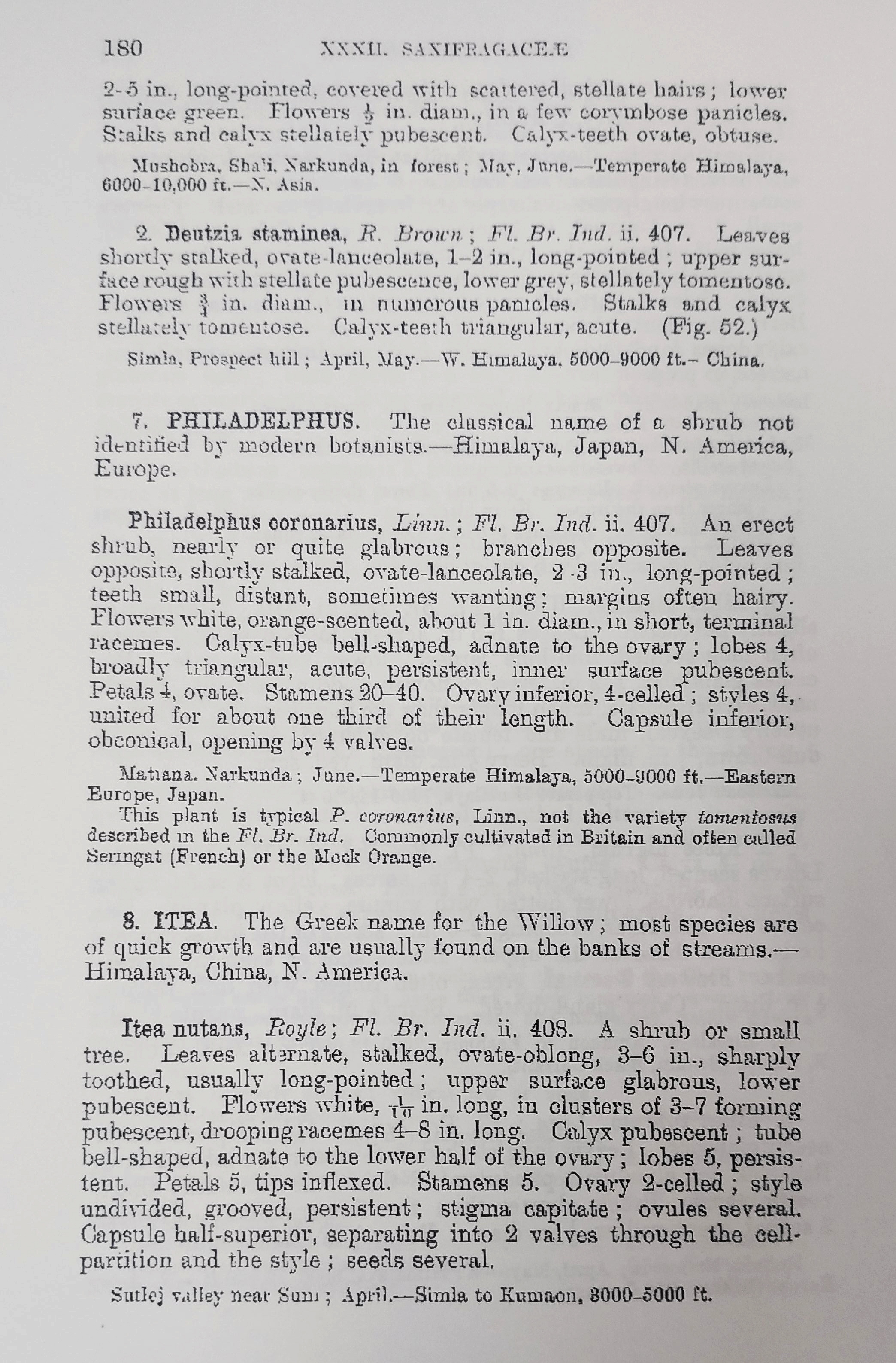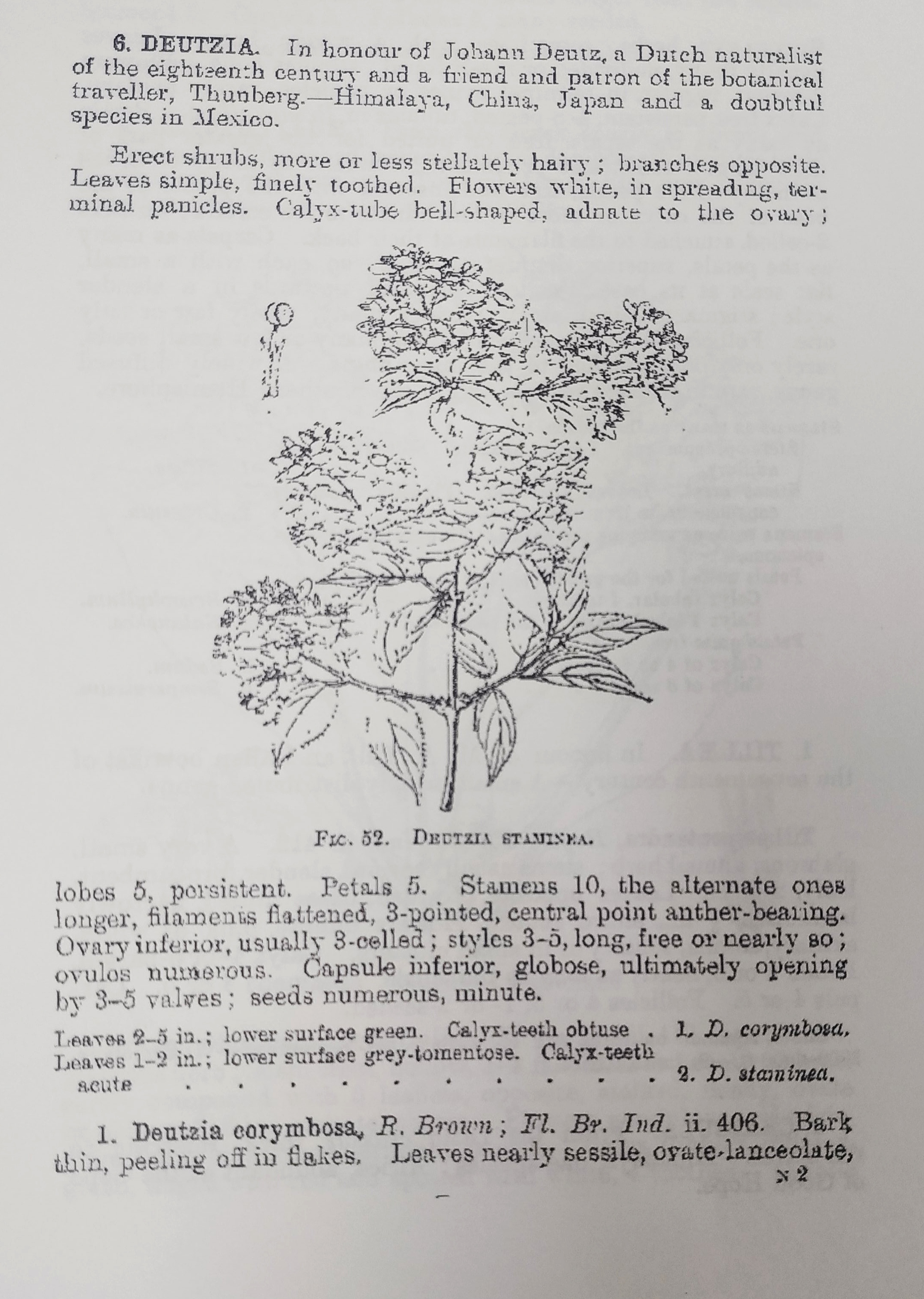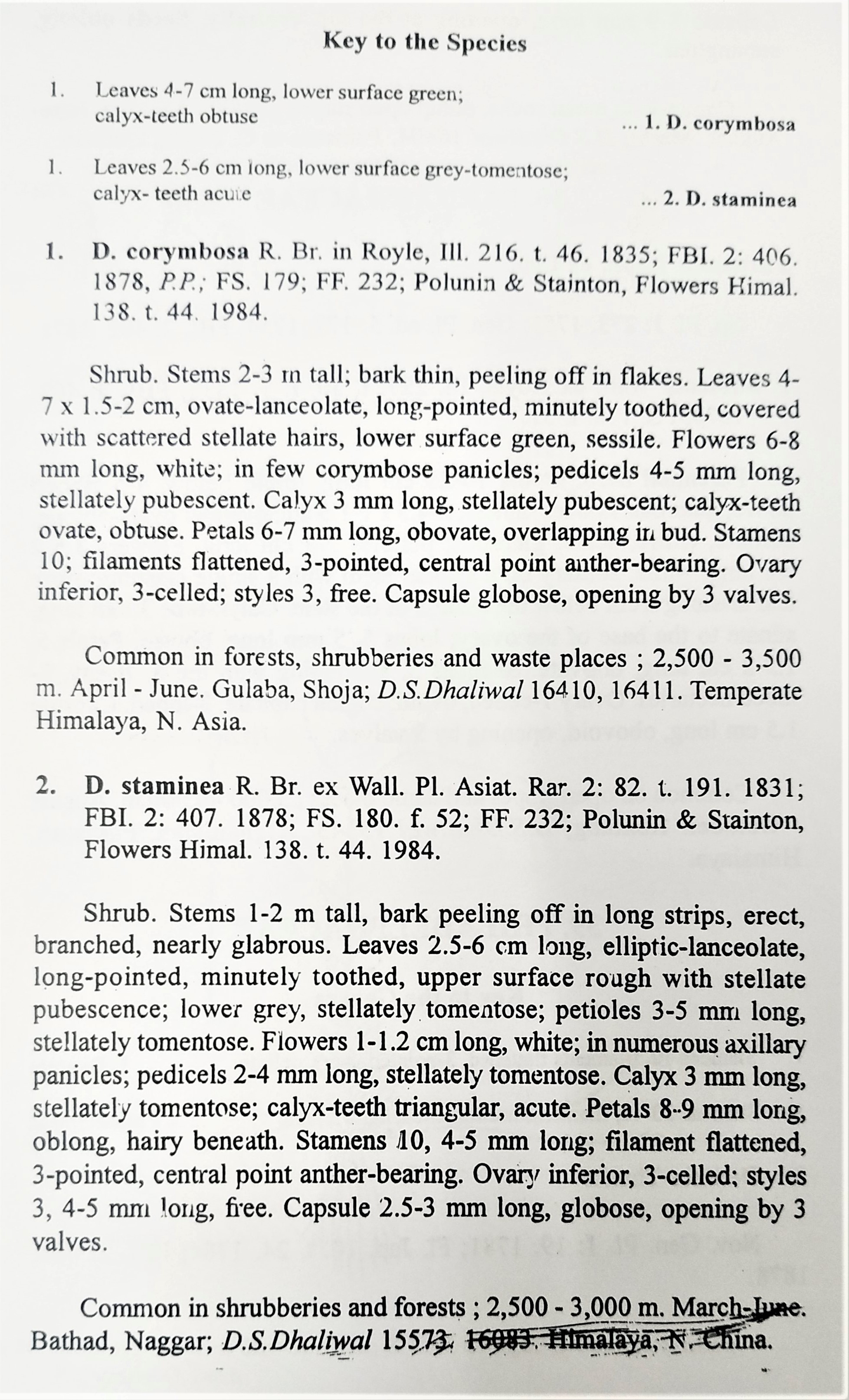Deutzia corymbosa R.Br. ex G.Don, Gen. Hist. 2: 808 (1832) as per POWO; . East Himalaya, Myanmar, West Himalaya as per POWO; . Keys as per efi thread: Calyx teeth acute in the key is confusing. However, they look entirely different from each other. Leaves are large in D. corymbosa with green lower surface (Grey in D. staminea). Inflorescence is terminal (axillary panicles in D. staminea). . Deutzia corymbosa : 32 posts by 2 authors. 8 images. Deutzia corymbosa Your photographs are from UK, where only D. staminea and D. compacta occur. In H.P., only D. staminea and D. corymbosa occur. According to FLORA OF GARHWAL by GAUR, young branches are reddish brown in D. compacta (also in your samples), while brownish in D. corymbosa. Leaves are comparatively larger in size in D. corymbosa. Oh! Got another hint in PLANTS OF KEDARNATH WILDLIFE SANCTUARY, WESTERN HIMALAYA by Rai, Singh and Rawat. Your images look similar to those at Deutzia staminea R.Br. ex Wall. What are the keys ? Deutzia corymbosa R. Br. is a syn. of Deutzia hookeriana (Schneid.) Airy Shaw as per Catalogue of life. Details available in Flora of China and FoC illustration. Checklist of Nepal gives Deutzia hookeriana (C. K. Schneid.) Airy Shaw as a syn. of Deutzia compacta Craib Both these are closely related as per keys in Flora of China:
Calyx is different in D.compacta as per FoC illustration and appears different from your post, to me. Surprisingly, I do not find any stellate hairs on abaxial surface in your image DSCN0168.JPG (in fact, it appears totally glabrous) No, Sir. These are quite different from D. staminea. D. staminea is very common species in H.P. and U.K. This one very rare. Seen only 2-3 plants during the last 10 years. It is similar to D. compacta occurring in UK and Nepal. D. compacta was enlisted at FoI. But, when I sent D. corymbosa to …, he changed the correctly identified D. compacta to D. corymbosa. Kindly go through the complete thread. There is no error in my ID. What are the keys given in your books? I am following Local Floras (Flora Simlensis, Flora of Sirmaur, Flora of Kullu, Flora of Chamba, Flora of Bashahar Himalaya, Flora of Lahul) along with POWO and WFO at present. I do not use Catalogue of Life.
Leaves of Deutzia staminea and D. corymbosa for comparison. Thanks, … You can clearly see calyx teeth is acute here and not obtuse as given in the keys for D.corymbosa. I think this is the most important character. For your posted plant, I will go for Deutzia staminea R.Br. ex Wall. (where calyx is clearly seen). Kindly see the leaf characteristics, leaf size, abaxial surface and inflorescence type. Calyx teeth Posting Deutzia staminea separately. Calyx teeth is acute. Can you explain why the key states it to be obtuse? By seeing your other post, calyx looks a bit different, but calyx teeth is still acute. Pl. see calyx in D.compacta as per FoC illustration I agree with your id as D. corymbosa, but keys w.r.t. calyx teeth are not properly worded, causing confusion. Have you seen my another post on D. staminea? Yes, … Calyx teeth acute in the key is confusing. However, they look entirely different from each other. Leaves are large in D. corymbosa with green lower surface (Grey in D. staminea). Inflorescence is terminal (axillary panicles in D. staminea). . Spiraea cantoniensis?? enroute Dev Kyara Uttarkhand- PKA12: 8 images. This Shrub from Rosaceae was spotted enroute Dev Kyara, Uttarakhand. Could this be Spiraea cantoniensis?? It could be Dutzia only Deutzia corymbosa
. References: |
Deutzia corymbosa
Updated on December 24, 2024



